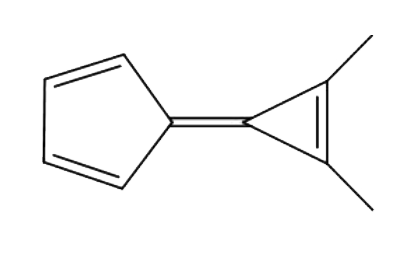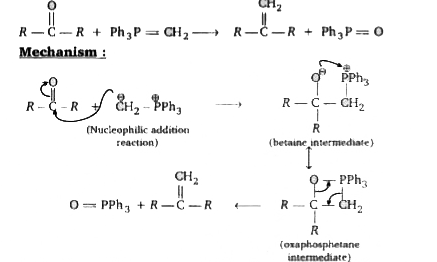Explain how the valence bond theory accounts for a carbon carbon double bond.
To explain how the valence bond theory (VBT) accounts for a carbon-carbon double bond, we can break down the explanation into several steps:
1. Understanding Valence Bond Theory (VBT):
- VBT states that only valence electrons participate in bond formation. In the case of carbon, which has an atomic number of 6, its electronic configuration is 1s² 2s² 2p².
Hint: Remember that VBT focuses on the role of valence electrons in bonding.
2. Electron Configuration of Carbon:
- Carbon has 4 valence electrons: 2 in the 2s subshell and 2 in the 2p subshell. However, in its ground state, there are only 2 unpaired electrons in the 2p orbitals.
Hint: Identify how many unpaired electrons are present in the ground state of carbon.
3. Excited State of Carbon:
- To form bonds, one of the 2s electrons can be promoted to the 2p orbital, resulting in 4 unpaired electrons: one in the 2s orbital and three in the 2p orbitals.
Hint: Consider the importance of electron promotion in achieving hybridization.
4. Hybridization:
- The concept of hybridization is introduced in VBT. For carbon, the relevant hybridization for forming a double bond is sp² hybridization. In this process, one 2s orbital and two 2p orbitals mix to form three equivalent sp² hybrid orbitals.
Hint: Recall that hybrid orbitals are formed from the mixing of atomic orbitals.
5. Geometry of Hybrid Orbitals:
- The three sp² hybrid orbitals are oriented in a trigonal planar arrangement with a bond angle of 120 degrees. Each sp² hybrid orbital has 33.33% s character and 66.66% p character.
Hint: Visualize the geometry of sp² hybridization to understand bond angles.
6. Formation of Sigma and Pi Bonds:
- When two carbon atoms approach each other, their sp² hybrid orbitals overlap linearly to form a sigma (σ) bond. Additionally, each carbon atom has one unhybridized p orbital that is perpendicular to the plane of the sp² orbitals. These unhybridized p orbitals overlap side by side to form a pi (π) bond.
Hint: Differentiate between sigma and pi bonds based on their formation and orientation.
7. Summary of Bonding in C=C:
- In a carbon-carbon double bond, there is one sigma bond formed by the overlap of sp² hybrid orbitals and one pi bond formed by the side-by-side overlap of unhybridized p orbitals.
Hint: Remember that a double bond consists of one sigma bond and one pi bond.
8. Bonding with Hydrogen:
- Each carbon atom can also form sigma bonds with hydrogen atoms using the remaining sp² hybrid orbitals, resulting in a total of four sigma bonds (two C-H and one C=C).
Hint: Consider the role of hydrogen in completing the bonding around carbon.
Final Summary:
The valence bond theory explains the formation of a carbon-carbon double bond through the concepts of hybridization, where carbon undergoes sp² hybridization, resulting in one sigma bond from hybrid orbital overlap and one pi bond from the overlap of unhybridized p orbitals.
- VBT states that only valence electrons participate in bond formation. In the case of carbon, which has an atomic number of 6, its electronic configuration is 1s² 2s² 2p².
- Carbon has 4 valence electrons: 2 in the 2s subshell and 2 in the 2p subshell. However, in its ground state, there are only 2 unpaired electrons in the 2p orbitals.
- To form bonds, one of the 2s electrons can be promoted to the 2p orbital, resulting in 4 unpaired electrons: one in the 2s orbital and three in the 2p orbitals.
- The concept of hybridization is introduced in VBT. For carbon, the relevant hybridization for forming a double bond is sp² hybridization. In this process, one 2s orbital and two 2p orbitals mix to form three equivalent sp² hybrid orbitals.
- The three sp² hybrid orbitals are oriented in a trigonal planar arrangement with a bond angle of 120 degrees. Each sp² hybrid orbital has 33.33% s character and 66.66% p character.
- When two carbon atoms approach each other, their sp² hybrid orbitals overlap linearly to form a sigma (σ) bond. Additionally, each carbon atom has one unhybridized p orbital that is perpendicular to the plane of the sp² orbitals. These unhybridized p orbitals overlap side by side to form a pi (π) bond.
- In a carbon-carbon double bond, there is one sigma bond formed by the overlap of sp² hybrid orbitals and one pi bond formed by the side-by-side overlap of unhybridized p orbitals.
- Each carbon atom can also form sigma bonds with hydrogen atoms using the remaining sp² hybrid orbitals, resulting in a total of four sigma bonds (two C-H and one C=C).
The valence bond theory explains the formation of a carbon-carbon double bond through the concepts of hybridization, where carbon undergoes sp² hybridization, resulting in one sigma bond from hybrid orbital overlap and one pi bond from the overlap of unhybridized p orbitals.
Topper's Solved these Questions
- CHEMICAL BONDING AND MOLECULAR STRUCTUREBOOK - ICSECHAPTER - CHEMICAL BONDING AND MOLECULAR STRUCTUREEXERCISE - ESSAY (LONG ANSWER ) TYPE QUESTIONS
45 Videos
- CHEMICAL BONDING AND MOLECULAR STRUCTUREBOOK - ICSECHAPTER - CHEMICAL BONDING AND MOLECULAR STRUCTUREEXERCISE - OBJECTIVE ( MULTIPLE CHOICE ) TYPE QUESTIONS
81 Videos
- CHEMICAL BONDING AND MOLECULAR STRUCTUREBOOK - ICSECHAPTER - CHEMICAL BONDING AND MOLECULAR STRUCTUREEXERCISE - VERY SHORT ANSWER TYPE QUESTIONS
50 Videos
- CHEMICAL THERMODYNAMICS BOOK - ICSECHAPTER - CHEMICAL THERMODYNAMICS EXERCISE - NCERT TEXT-BOOK. EXERCISES
22 Videos
Similar Questions
Knowledge Check
Wittig reaction :
The reaction of a phosphorus ylide with an aldehyde (or) ketone introduces a carbon-carbon double bond is place of the carbonyl bond.

Driving froce of the reaction is high bond energy of (P = O). (ΔH=−ve).
 , Major product (A) is :A
, Major product (A) is :A B
B C
C D
D
Wittig reaction :
The reaction of a phosphorus ylide with an aldehyde (or) ketone introduces a carbon-carbon double bond is place of the carbonyl bond.

Driving froce of the reaction is high bond energy of (P = O). (ΔH=−ve).
 , Major product (A) is Acis-2-buteneBtrans-2-buteneCiso-buteneD1-butene
, Major product (A) is Acis-2-buteneBtrans-2-buteneCiso-buteneD1-buteneWittig reaction :
The reaction of a phosphorus ylide with an aldehyde (or) ketone introduces a carbon-carbon double bond is place of the carbonyl bond.

Driving froce of the reaction is high bond energy of (P = O). (ΔH=−ve).
 . Product (A) is :A
. Product (A) is :A B
B C
C D
D
Valence bond theory was introduced by
View SolutionAcetylene contains a carbon-carbon bond?
View SolutionOrdinarily the barrier to rotation about a carbon - carbon double bond is quite high but in compound P double bond between two rings was observed by NMR to have a rotational energy barrier of only about 20 cal/mol., showing that it has lot of single bond character.

The reason for this is
View SolutionWittig reaction :
The reaction of a phosphorus ylide with an aldehyde (or) ketone introduces a carbon-carbon double bond is place of the carbonyl bond.

Driving froce of the reaction is high bond energy of (P = O). (ΔH=−ve).
 , Product (A) is :
, Product (A) is :
View SolutionThe valence bond theory for complexes was put forward by
View Solution
